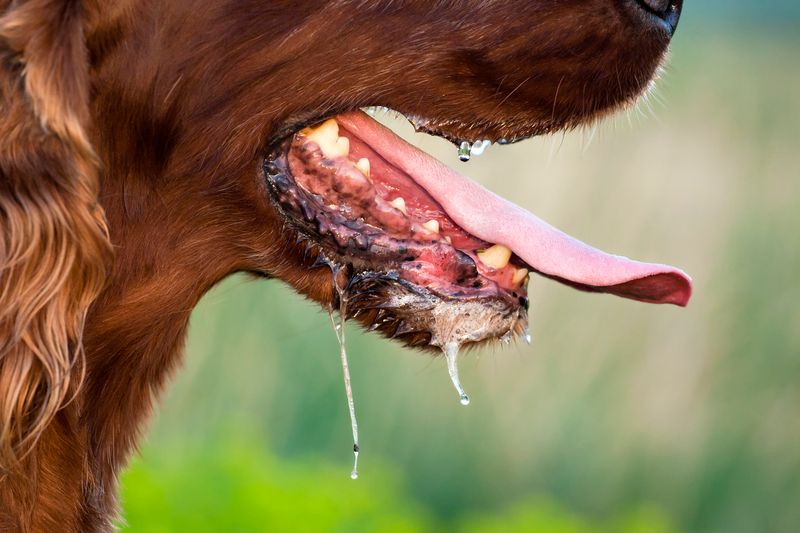Dogs are masters at hiding pain, but that doesn’t mean they’re not suffering. As loving pet owners, it’s crucial to spot the subtle signs that something’s wrong before it’s too late. Pain can sneak up on our furry friends, and if we’re not paying attention, it can escalate quickly.
From changes in behavior to physical signs like limping or excessive panting, dogs communicate their discomfort in ways we sometimes overlook. The problem is, they can’t tell us what’s wrong, so we have to become experts in reading their signals.
Don’t let your dog suffer in silence. In this post, we’ll explore 14 key signs that your dog may be in pain, along with practical solutions to help ease their discomfort. Your furry friend depends on you—let’s make sure we’re there when they need us the most.
Unusual Lethargy

Lethargy in dogs can be a sign of pain. If your canine companion is suddenly less enthusiastic about daily activities like walks or playtime, they might be experiencing discomfort. Typically energetic dogs showing a lack of interest might be trying to conserve energy due to pain.
Observing your pet’s energy levels is important. A consistent drop in enthusiasm, especially when combined with other signs, should prompt a vet visit. Prompt attention can lead to a quicker diagnosis and treatment, easing your dog’s discomfort and bringing back their playful spirit.
Excessive Licking or Chewing

Dogs often lick or chew areas of their body when they’re in pain. This behavior is usually an attempt to self-soothe or address an underlying issue. If your dog focuses on a certain spot more than usual, it might be indicating discomfort.
Pay attention to repeated licking or biting of the same area as it could lead to sores or infections. Consult your veterinarian to determine the root cause. By addressing the issue early, you can prevent further complications and help your dog feel more comfortable.
Changes in Appetite

A sudden change in appetite can indicate pain in dogs. If your dog is typically an enthusiastic eater but suddenly shows disinterest in food, it could be a sign something is wrong. Pain or discomfort often impacts a dog’s desire to eat.
It’s important to monitor not just what they eat, but how much. A significant decrease in food intake warrants a checkup. Early intervention can address potential problems, making mealtime enjoyable again for your furry friend.
Altered Breathing Patterns

Changes in breathing patterns can be a sign of pain in dogs. If your dog is panting excessively or seems to be breathing with difficulty, it might be experiencing discomfort. Pain can cause stress, leading to abnormal respiratory rates.
Observe how your dog breathes when at rest and during activity. If their breathing seems labored or abnormal, it’s time to consult a vet. Identifying the cause early can alleviate your dog’s pain and improve their quality of life.
Vocalizations

Vocalizations such as whining, whimpering, or yelping can indicate pain in dogs. While some dogs are naturally more vocal, sudden or unusual sounds can be a cry for help.
Pay attention if your dog starts vocalizing more frequently or in new situations. Vocal expressions, especially when touched or while moving, can point to underlying pain issues. Consult your veterinarian to understand the cause. Addressing the problem can provide relief and comfort for your pet.
Changes in Sleeping Patterns

Dogs in pain might exhibit changes in their sleeping patterns. If your pet is sleeping more than usual or struggling to find a comfortable position, it might be a sign of discomfort. Sleep can be a way for dogs to escape pain.
Monitor their sleep routine and note any significant changes. Prolonged sleep disruptions warrant professional advice. A vet can help pinpoint the issue, offering solutions to improve your dog’s rest and overall well-being.
Aggression or Irritability

Pain can sometimes manifest as aggression or irritability in dogs. If your normally friendly dog becomes snappy or defensive, it might be in pain. This change in behavior is often a protective mechanism.
Be cautious and gentle when approaching a potentially painful area. If aggression persists, seek veterinary guidance. Identifying the root cause of these changes can lead to effective treatments, reducing pain and restoring your pet’s usual disposition.
Shivering or Trembling

Shivering or trembling can be a sign of pain or discomfort in dogs. While some dogs shake when they’re cold or anxious, persistent trembling might indicate something more serious, like pain.
If you notice your dog shaking more than usual, especially when it’s not cold, consult your vet. Identifying the source of the pain is crucial. Prompt attention to these signs can lead to appropriate treatment, ensuring your pet feels safe and comfortable again.
Hiding or Avoidance

If your dog is hiding or avoiding family members, it could be a sign of pain. Dogs instinctively hide to protect themselves when they feel vulnerable or unwell.
Notice if your dog is spending more time alone or in unusual places. These behaviors can suggest that something is amiss. A veterinary visit can help determine the source of discomfort, allowing you to address the issue and help your dog feel more secure and loved.
Stiffness or Lameness

Stiffness or lameness is a common sign of pain in dogs, often related to joint or muscle issues. If your dog is limping or moving awkwardly, it might be experiencing discomfort.
Watch for signs like difficulty getting up, hesitance in movement, or an uneven gait. Consulting with your vet can provide a diagnosis and treatment plan. Addressing mobility issues early can greatly enhance your pet’s comfort and quality of life, bringing back the joy of movement.
Excessive Drooling

Excessive drooling can sometimes indicate pain in dogs. While some breeds naturally drool more than others, a sudden increase can signal discomfort. It might be related to dental pain or other underlying issues.
Observe your dog’s drooling habits and look for accompanying signs like pawing at the mouth. A veterinary assessment can help identify the cause and provide solutions. By addressing the pain early, you can prevent further distress and keep your dog happy and healthy.
Changes in Posture

Dogs in pain might exhibit changes in their posture. An arched back, tucked tail, or stiffened limbs can all be indicators of discomfort. These signs often suggest that your dog is trying to alleviate pressure or pain.
If you notice unusual postures, consult your veterinarian. Understanding the cause of these changes can lead to effective treatment, helping your dog maintain a comfortable and active lifestyle.
Loss of Interest in Play

A sudden disinterest in play can be a sign that your dog is in pain. If your once playful dog suddenly avoids toys or playtime, it might be due to discomfort. Pain can make physical activities unpleasant for dogs.
Regularly assess your pet’s enthusiasm for play. If there’s a noticeable decline, it’s important to consult a vet. Timely intervention can identify and address the pain, bringing back the joy of play and interaction with your furry companion.
Unexplained Weight Loss

Unexplained weight loss in dogs can sometimes signal pain, often linked to decreased appetite or metabolic issues. If your dog is losing weight without a change in diet, it might be a sign of discomfort.
Monitor your dog’s weight and consult with your vet to rule out serious conditions. Identifying and treating the underlying cause can restore your dog’s health and vitality, ensuring they maintain a healthy weight.

